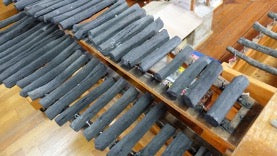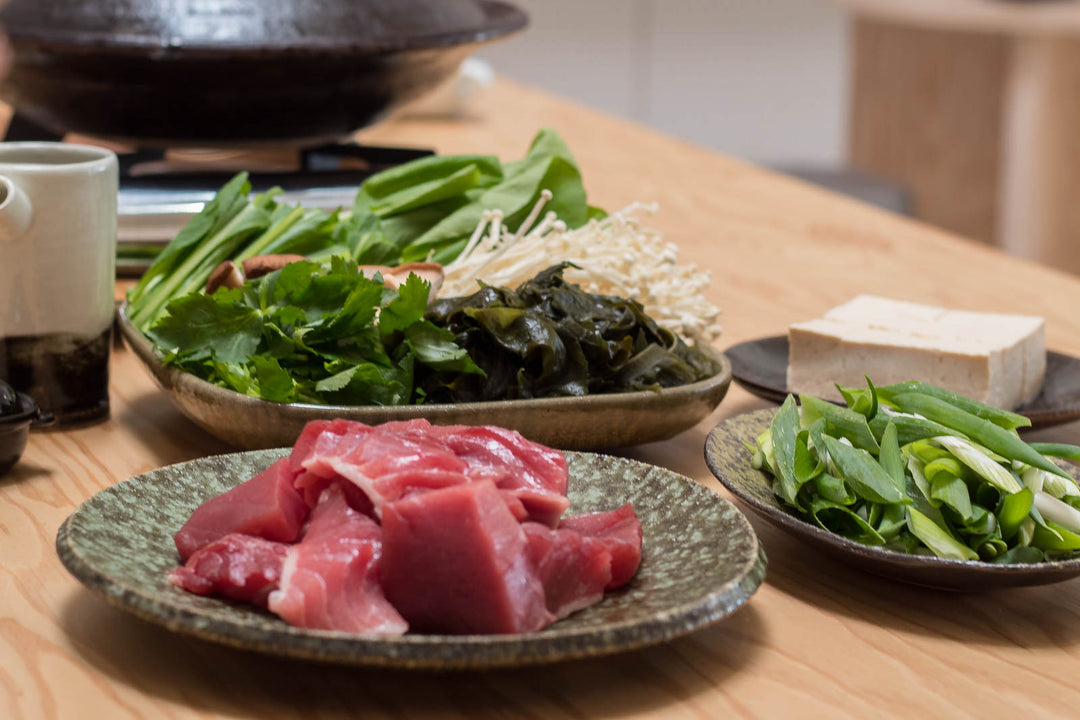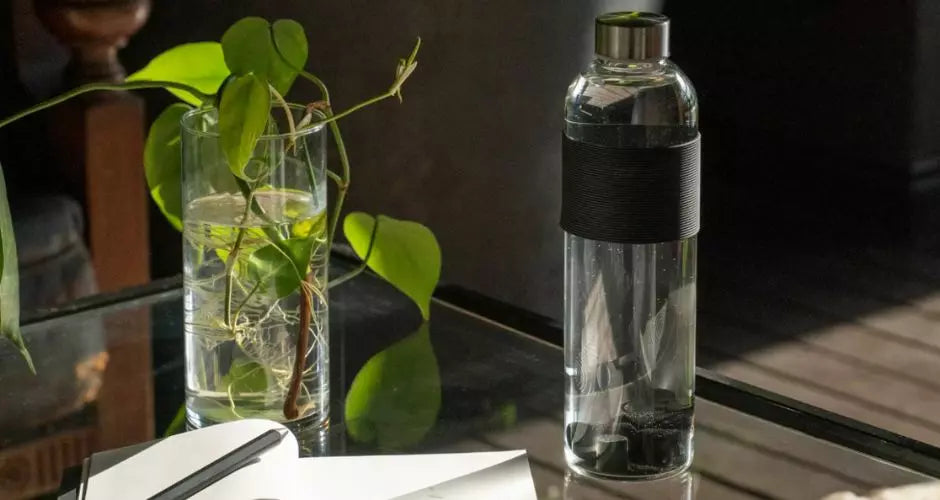Binchotan: The King of all Charcoals

Image credit: Solidbiofuels
Charcoal is an age-old fuel source that has evolved into an art form in the world of grilling and cooking. But among the many varieties available out there, there's one that stands out as the king of all charcoals: Binchotan. Renowned for its purity, long burning time, and exceptional heat, Binchotan has captured the hearts of chefs and foodies all over the world. Exactly what is it about Binchotan that makes it so extraordinary? Let’s take a step back in time to truly appreciate its heritage, history and how it’s made.
A Rich History

Image credit: Knifewear.com
Binchotan (備長炭), also known as white charcoal, has a rich history that traces back centuries in Japan. It is named after a charcoal maker in Tanabe, Wakayama prefecture, BicchuyaChozaemon, who started selling this type of charcoal (Tan) in the late 17th Century.
Originally, Binchotan was only from Wakayama, but some charcoal makers have moved to other areas of Japan, such as Tosa and even further to Miyazaki (Hyuga), seeking a specific type of wood called Ubame Kashi or Ubame Oak.
Binchotan was initially crafted for heating tea water in traditional tea ceremonies, where its ability to burn cleanly without imparting unwanted flavours was highly valued. Over time, its use expanded to include grilling, creating a culinary tradition that has become synonymous with Binchotan.
In recent years, Binchotan has gained international recognition for its unparalleled qualities in the cooking world. Chefs around the globe have embraced it as a way to elevate the flavours of their dishes while maintaining precise control over cooking temperatures.
The Binchotan Process

Image credit: Japan.org
Making Binchotan requires incredible skill and is a very labour-intensive process, passed down through many generations. Why do people go to such great lengths, dedicating their lives to making charcoal? Because it's simply the best.
The process begins with cutting high-quality oak wood into small branches or logs. These pieces are then stacked in very large, airtight clay kilns – a crucial step in the Binchotan-making process. The kilns are heated to around 1,800 degrees Celsius, and this extreme temperature plays a pivotal role in the transformation of wood into charcoal.
The opening is sealed with brick and mortar gradually over a nine-hour period. They leave four small holes: two at the top of the kiln and two at the bottom, for airflow to the fire and to release steam. In order to remove all moisture from the wood, they do a long, controlled burn at lower temperatures that takes six or seven days. During this process, white steam can be seen coming up from the chimney of the factory. Once all the steam is gone, the wood has become charcoal.
If regular charcoal was being made, the openings would be closed, starving the fire of oxygen and snuffing it out. But Binchotan goes through an extra step, one which really sets it apart: Seiren or refining. A Binchotan maker will make more openings in the kiln, gradually adding more airflow. This is done at a very gradual pace, as a rapid increase of oxygen inside the kiln would burn everything into ashes. On the contrary, if it’s done too slowly, the Binchotan won't turn out quite right. This intricate process takes between 24 to 48 hours, during which the internal temperature reaches 1000 degrees Celsius. This process burns off bark and makes the charcoal denser, tighter, harder, and more pure in carbon content. (Keep in mind that Binchotan charcoal is 95% or more pure carbon, whereas regular charcoals is around 75%.)
The hot charcoal is then taken out of the kiln while it is still hot. The Binchotan is covered with sand and ashes to cool them down gradually. The dust that coats the charcoal is the reason why Binchotan is called “white charcoal”. This entire whole process takes up to 10 days and produces about 600 kg of Binchotan per batch.
The result is a dense, hard charcoal with a distinct metallic sound when struck, a testament to its purity and quality. Binchotan's high density contributes to its slow-burning nature, allowing it to maintain a consistent, high heat for an extended period.

Image credit: Commons.wikimiedia.org
Cooking with Binchotan
There are many benefits of cooking with Binchotan, but perhaps one of its most alluring aspects is its versatility in the kitchen. Whether you’re cooking meats, seafood, vegetables, or even preparing delicate dishes like sashimi, Binchotan’s high heat output and long burn time make it an ideal choice for grilling. The intense heat sears meat quickly, locking in juices and creating a beautiful char while maintaining a tender interior. When used in a traditional Japanese hibachi grill, Binchotan imparts a unique smokiness and flavour that enhances the food's natural taste.

For lovers of yakitori, Binchotan is the gold standard. Its even heat distribution and minimal smoke production allow the delicate flavours of skewered meats and vegetables to take centre stage.
Furthermore, Binchotan can be used to enhance the flavour of food in other creative ways. Placing a small piece of it in a smoker box with wood chips infuses your dishes with a subtle smokiness that's hard to replicate with other charcoals.
Easy Binchotan Recipes
With Vegetarian Day coming up on 1 October, what better way to celebrate than with a delicious grilled Aubergines. When prepared over Binchotan charcoal, their authentic essence truly comes to life.
These Chicken and Spring Onion Skewers are ready to become your new favourite weekend lunch. Quick, easy and incredible tasty. Give them a try!
Jack of All Trades

The wonderful thing about Binchotan is that it isn’t just for cooking or grilling; this little piece of nature is the gift that keeps on giving with its remarkable benefits and qualities. It’s well-loved for its purifying, deodorising and restorative properties. It’s also extremely porous and filled with countless microcavities, allowing it to efficiently absorb impurities from the water, air and even skin. Read our blog post on All things Binchotan to learn more about Binchotan-infused products.
The Ultimate King
There’s simply no question about it: Binchotan’s ability to provide high, consistent heat while imparting minimal flavour makes it an essential tool for anyone passionate about the art of cooking. Its incredible purity, labour-intensive production process, and rich history have earned it the esteemed title of the king of all charcoals.
Whether you're a professional chef or a home cook, incorporating Binchotan into your cooking repertoire allows you to unlock a world of possibilities and elevate your dishes to new heights. So, the next time you fire up the grill, consider the magic of Binchotan charcoal and enjoy the outstanding results it brings to your table.




